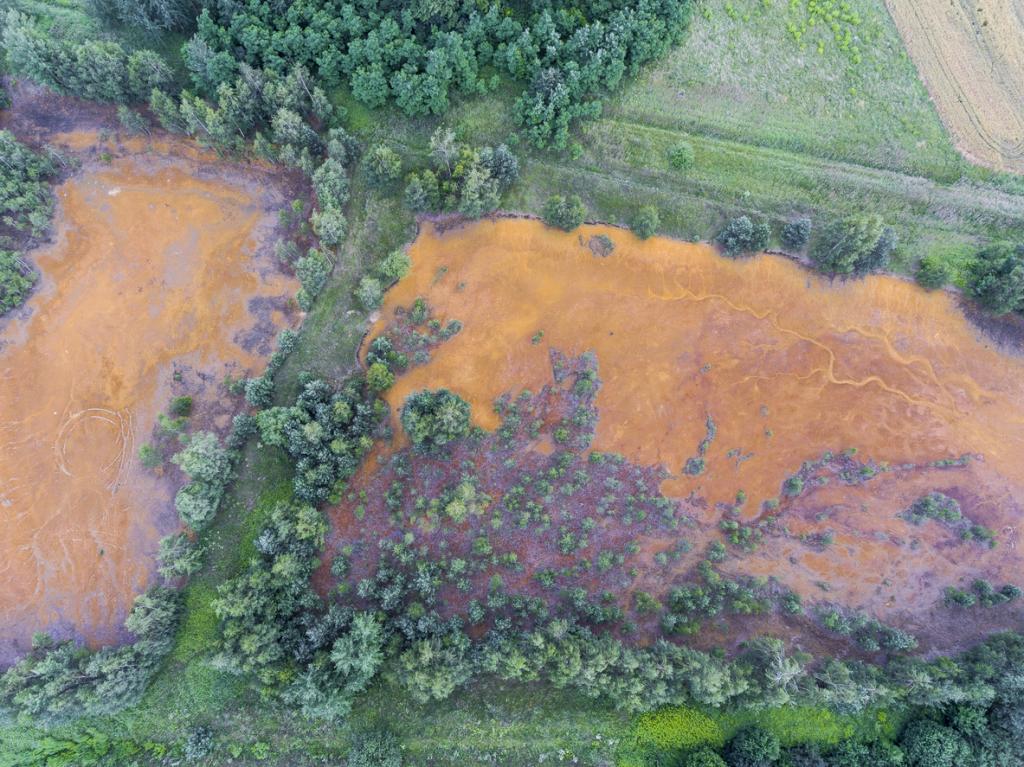Source: https://www.downtoearth.org.in/blog/environment/world-soil-day-a-third-of-it-is-degraded-here-s-the-solution-countries-should-adopt-86364
Soil erosion mitigation through the application of sustainable soil management is critical for protecting our soil
By Abhay Kumar Singh
Published: Monday 05 December 2022
Soil is key to sustaining life on Earth as it provides essential ecosystem functions and food security. In 2014, the United Nations Food and Agricultural Organization (FAO) declared December 5 as ‘World Soil Day’. The day was chosen as it coincides with the birthday of Thailand’s king, HM King Bhumibol Adulyadej, who led the programme and made it happen. It aims to draw people’s attention to the importance of healthy soil for the environment and for life.
Soil is important for both humans and animals because it provides plants nutrition to grow and foothold for their roots. It filters rainwater, recharges groundwater, regulates the discharge of excess rainwater, preventing flooding and it can store large amounts of organic carbon. Soil can help regulate emissions of carbon dioxide and other greenhouse gases.
We build with soil — and on it — from mud brick houses to buildings, highways and more. It is a habitat for billions of organisms (including microorganisms) and about 25 per cent of the planet’s biodiversity.
The soil microbes help break down organic matter and extract vital nutrients plants can use. Soil’s capacity to hold water varies according to the soil type (clay holds more water than sandy soil) and organic matter content. Each one per cent increase in soil organic matter helps the soil hold 20,000 gallons more water per acre.
Healthy soils are the foundation of the food system. It is estimated that 95 per cent of our food is directly or indirectly produced on our soils. A healthy soil helps sustain life — plants, insects and microorganisms; withstand climate events like droughts, floods and erosion; and provide other ecosystem services.
The microorganisms and larger organisms turn minerals into plant nutrients, which improve crop production. Healthy soil can help mitigate climate change by increasing its carbon content. A rough estimate suggests that soil removes about 25 per cent of global fossil fuel emissions from the atmosphere each year.
Healthy soil has the right chemical composition of macro- and micro-nutrients such as nitrogen, phosphorus, potassium, calcium, magnesium, sulphur, iron, manganese and others, which plants get from the soil.
Healthy soils store carbon and other greenhouse gases in soil organic matter (SOM). SOM is rich in carbon, as is soil organic carbon. Soil health and carbon sequestration are important from the perspective of climate change. Globally, 10-14 per cent of total carbon emissions come from the intensive agricultural production system.
Despite soil being fundamental to life, anthropogenic pressure to produce more in the name of food security has put pressure on it. Soil management is an essential element of regenerative agriculture, which helps regeneration.
Intensive agriculture main culprit
A third of the world’s soils are degraded and in India, around 29.7 per cent land is degraded, according to the ISRO Atlas published in 2021.
Degraded soils are prone to erosion. Soil erosion and land degradation pose a major threat to global food security and to the achievement of the United Nations-mandated Sustainable Development Goals, compromising the well-being of at least 3.2 billion people around the world.
Because 95 per cent of the food we eat comes from the soil, soil erosion mitigation through the application of sustainable soil management is critical for protecting our soil, while ensuring a sustainable and food-secure world.
The major reasons are intensive agriculture, which promotes monocropping, regular and over-tillage as well as use of chemicals. Chemical fertilisers and pesticides reduce beneficial soil organisms, which are necessary for soil health, making it less productive, reducing its water retention capacity and making it more susceptible to erosion, according to estimates.
The loss of a few inches of topsoil has the potential to lower crop yields by 50 per cent. It can take hundreds of years to rebuild the soil.
The Intergovernmental Panel on Climate Change indicated that carbon sequestration will be a critical part of the strategy to fight global warming. Soil carbon sequestration is a process by which carbon dioxide is removed from the atmosphere and stored in soil, through processes like photosynthesis or the conversion of CO2 found in air pockets in soil into inorganic carbonates.
This is possible with regenerative agriculture, which may result in more SOM in the soil. In fact, nearly 80 per cent (2,500 gigatonnes) of all carbon in terrestrial ecosystems is found in soil.
Organic matter increase can help with carbon sequestration, while also improving the soil’s microbial population. This is possible through reversative agriculture (organic or natural farming) — a low-cost approach to reducing greenhouse gas emissions. Organic farming does not use chemicals, but it does increase organic matter content, microorganism population and plant availability of both micro- and macro-nutrients.
With only about 60 years of topsoil remaining under current practices, regenerative agriculture is the solution. The question is how we support farmers’ transition to adopt regenerative farming (organic and natural). Measures such as capacity building, incentives, seed and input availability as well as a mission-mode programme will have a long-term benefit for soil health and carbon sequestration.
